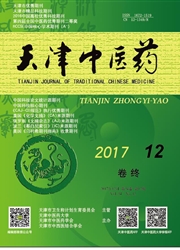

 中文摘要:
中文摘要:
[目的]研究以任务为导向点按不同的经穴对脑卒中患者分离运动期肢体运动功能康复方面的研究。[方法]选取脑卒中患者40例,分为常规康复模式治疗组20例、以任务为导向点按经穴康复组20例,两组应用Fugl-Meyer运动功能评分对患者的肢体运动功能进行评定,并对治疗前后功能评分的均数进行统计学分析。[结果]两组在脑卒中患者分离运动期肢体运动功能康复方面都是有效的,但以任务为导向点按经穴康复组的评分明显高于现代技术康复组。[结论]以任务为导向点按经穴对脑卒中分离运动期肢体运动功能的治疗更有针对性,疗效更显著。
 英文摘要:
英文摘要:
[Objective] To study effect of the task oriented points press on limbs movement function in stroke separation of moving period. [Methods] We selected stroke patients of 40 cases, divided into the conventional model of rehabilitation treatment group of 20 cases, re-habilitation group of 20 cases according to the task oriented points press, and two groups were assessed on limb movement function in pa-tients by Fugl-Meyer before and after treatment. Scores of two groups were analyzed statistically. [Results] It was effective on limb move-ment function rehabilitation in stroke separation of moving period in two groups, but the score in group of the task oriented points press was obviously higher than modern technology of rehabilitation group. [Conclusion] The curative effect is more obvious of task oriented points press on limbs movement function in the stroke separation of moving period.
 同期刊论文项目
同期刊论文项目
 同项目期刊论文
同项目期刊论文
 期刊信息
期刊信息
